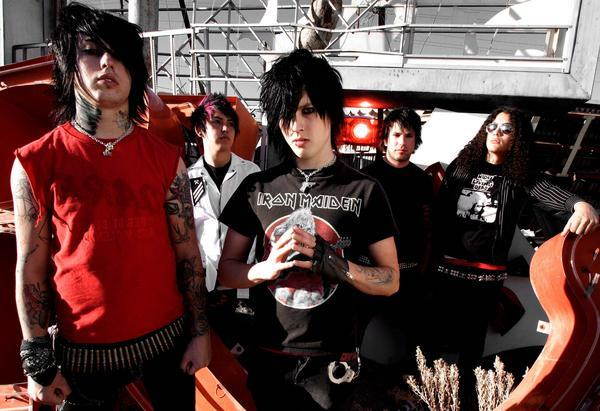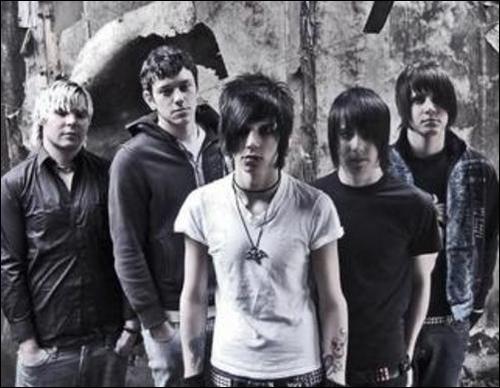“It’s just amazing to feel like I am a full citizen — I am not a second-class citizen,” said Christmas Laubrile, a nurse, who was with her partner, Alice Heimsoth. “I don’t have to sit in the back of the bus, and I don’t have to take second best.”
Among those celebrating were Gavin Newsom, the city’s mayor, who had set off a fair amount of the national debate over gay marriage in 2004 when he ordered the county clerk to issue licenses to same-sex couples. More than 4,000 couples married, though those unions were later invalidated by lower court decisions.
“What a day for San Francisco, what a day for California, what a day for America, what a day for equality,” Mr. Newsom said before a crowd of several hundred jubilant supporters at San Francisco City Hall.
Mr. Newsom said his office would begin preparing for new gay marriages as soon as the court decision was effective in 30 days. But unlike in 2004, Thursday’s decision would effect marriages statewide, something that the mayor seemed both relieved and vindicated by. “This is not just San Francisco now,” he said shortly after the decision was released. “Its Redding. Its Auburn. It’s Long Beach, its the southern part of the state. It’s Riverside. Its Fresno, that this is now appropriate and legal.”
Even as gay rights groups hailed the decision, however, opponents of same-sex marriage said they wanted to put the issue to a test before California voters in November. Conservative groups have proposed an amendment to the state Constitution banning gay marriage and have gathered more than a million signatures in an effort to get it on the ballot.
Gov. Arnold Schwarzenegger, a moderate Republican who has vetoed past bills aimed at legalizing same-sex marriage, issued a brief statement saying he would not support a constitutional amendment that would overturn the court’s ruling.
“I respect the court’s decision and as governor I will uphold its ruling,” the Mr. Schwarzenegger said.
Elsewhere, reaction split largely along party lines. The Assembly Republican leader, Mike Villines, said that the decision was a disappointment, but that he believed California voters would affirm that “marriage should be between one man and one woman.”
“I am confident that the people of California will again overwhelmingly vote to preserve and protect traditional marriage,” said Mr. Villines, who is from Fresno, in the state’s more conservative central valley.
Democrats, who hold majorities in both houses of the Legislature, hailed the ruling, as did gay rights groups statewide and nationally.
“There is no more important and deeply personal decision than whether to take on the commitment of marriage,” said Shannon Price Minter, legal director of the National Center for Lesbian Rights, who argued the case. “With today’s ruling, the California Supreme Court declared that lesbians and gay men have an equal right to make that cherished commitment.”
On the steps of the California Supreme Court and at San Francisco City Hall, the mood was festive, as gay and lesbian couples slowly streamed in. . Some women wore wedding dresses. At a noon news conference in the ornate City Hall rotunda, dozens of same-sex couples stood behind a beaming Mr. Newsom and other city officials, as several hundred people cheered from the floor and balconies above.
Ellen Pontac had driven to San Francisco from Davis, Calif., about 65 miles to the east, with her partner, Shelly Bailes, to witness the decision, and she said she was thrilled with the decision, but still not totally satisfied.
“This is what should happen, its so simple, so clear,” she said. “I used to say that all I want is the same rights that a 14-year-old girl in Arkansas has. We can’t have them federally. But we will.”

To something less controvercial...
Robotic Suit Could Create Super Soldier
Rex Jameson bikes and swims regularly, and plays tennis and skis when time allows. But the 5-foot-11, 180-pound software engineer is lucky if he presses 200 pounds — that is, until he steps into an "exoskeleton" of aluminum and electronics that multiplies his strength and endurance as many as 20 times.
With the outfit's claw-like metal hand extensions, he gripped a weight set's bar at a recent demonstration and knocked off hundreds of repetitions. Once, he did 500.
"Everyone gets bored much more quickly than I get tired," Jameson said.
Jameson — who works for robotics firm Sarcos Inc. in Salt Lake City, which is under contract with the U.S. Army — is helping assess the 150-pound suit's viability for the soldiers of tomorrow. The suit works by sensing every movement the wearer makes and almost instantly amplifying it.
The Army believes soldiers may someday wear the suits in combat, but it's focusing for now on applications such as loading cargo or repairing heavy equipment. Sarcos is developing the technology under a two-year contract worth up to $10 million, and the Army plans initial field tests next year.
Before the technology can become practical, the developers must overcome cost barriers and extend the suit's battery life. Jameson was tethered to power cords during his demonstration because the current battery lasts just 30 minutes.
But the technology already offers evidence that robotics can amplify human muscle power in reality — not just in the realm of comic books and movies like the recently debuted "Iron Man," about a wealthy weapons designer who builds a high-tech suit to battle bad guys.
"Everybody likes the idea of being a superhero, and this is all about expanding the capabilities of a human," said Stephen Jacobsen, chief designer of the Sarcos suit.
The Army's exoskeleton research dates to 1995, but has yet to yield practical suits. Sarcos' technology sufficiently impressed Raytheon Co., however, that the Waltham, Mass.-based defense contractor bought Sarcos' robotics business last November. Sarcos also has developed robotic dinosaurs for a Universal Studios' "Jurassic Park" theme park ride.
Jack Obusek, a former colonel now with the Army's Soldier Research Development and Engineering Center in the Boston suburb of Natick, foresees robot-suited soldiers unloading heavy ammunition boxes from helicopters, lugging hundreds of pounds of gear over rough terrain or even relying on the suit's strength-enhancing capabilities to make repairs to tanks that break down in inconvenient locations.
Sarcos' Jacobsen envisions factory workers someday using the technology to perform manual labor more easily, and firefighters more quickly carrying heavy gear up stairwells of burning buildings. Disabled people also may find uses for the technology, he said.
"We see the value being realized when these suits can be built in great numbers for both military and commercial uses, and they start coming down in cost to within the range of the price of a small car," said Jacobsen. He declined to estimate how much the suit might cost in mass production.
But cost isn't the only obstacle. For example, developers eventually hope to lengthen the suit's backpack battery's life and tinker with the suit's design to use less energy. Meanwhile, the suit can draw power from a generator, a tank or helicopter. And there are gas engines that, while noisy, small enough to fit into the suit's backpack.
"The power issue is probably the No. 1 challenge standing in the way of getting this thing in the field," Obusek said.
But he said Sarcos appears to have overcome the key challenge of pairing super-fast microprocessors with sensors that detect movements by the body's joints and transmit data about them to the suit's internal computer.
Much as the brain sends signals to tendons to get muscles to move, the computer sends instructions to hydraulic valves. The valves mimic tendons by driving the suit's mechanical limbs, replicating and amplifying the wearer's movements almost instantly.
"With all the previous attempts at this technology, there has been a slight lag time between the intent of the human, and the actual movement of the machine," Obusek said.
In the demonstration, the bulky suit slowed Jameson a bit, but he could move almost normally. When a soccer ball was thrown at him, he bounced it back off his helmeted head. He repeatedly struck a punching bag and, slowly but surely, he climbed stairs in the suit's clunky aluminum boots, which made him look like a Frankenstein monster.
"It feels less agile than it is," Jameson said. "Because of the way the control laws work, it's ever so slightly slower than I am. And because we are so in tune with our bodies' responses, this tiny delay initially made me tense."
Now, he's used to it.
"I can regain my balance naturally after stumbling — something I discovered completely by accident."
Learning was easy, he said.
"It takes no special training, beyond learning to relax and trust the robot," he said.






















No comments:
Post a Comment